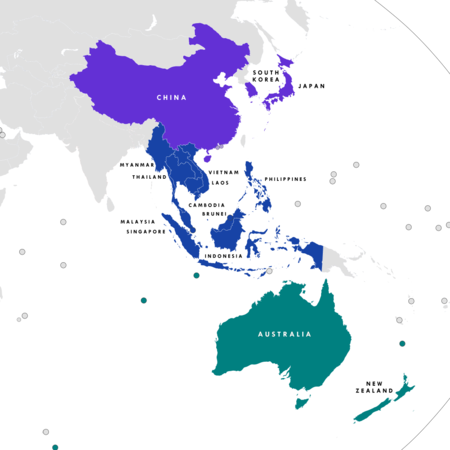
RCEP: Effective January 1: Japan is the largest beneficiary country
-Japanese exports increased by 5%, market for China and South Korea expanded-
UNCTAD
United Nations Conference on Trade and Development
On December 15, the following estimation results were announced.
The benefits of tariff reductions from the RCEP are:
Among the 15 participating countries
Japan is the largest.
Japan’s exports in member countries are expected to increase by 5.5% compared to 2019.
Effect of “cumulative origin standard”:
The background to this is “because Japanese companies are expanding widely throughout East Asia.”
According to “cumulative origin standard”
Parts production in the region, etc.
This is the result of all tariffs being exempt.
RCEP benefits Japan:
In Japan, “the negative impact of domestic hollowing out due to the overseas transfer of the manufacturing industry for a long time” affected employment.
This Japanese worries blossom with RCEP.
2022 is likely to be an economically auspicious year for Japan.
“Nikkei”
(December 30th)
An article entitled “Tailwinds for Japanese cars and agricultural products” was posted.
Japan’s exports will increase by 5% toward a huge economic zone.
RCEP, an FTA with China and South Korea, will come into effect on the 1st.
What is RCEP?
East Asia Regional Comprehensive Economic Partnership (RCEP) Agreement
Japan, China, South Korea and the Association of Southeast Asian Nations (ASEAN) will participate.
Effective January 1, 2022.
“A huge economic zone that occupies 30% of the world in GDP” will be born.
There is also an estimate that “Japan’s exports to the region will be boosted by more than 5% compared to 2019.”
History of RCEP:
Negotiations started in November 2012.
Signature completed in November 2020.
Talks were difficult as India left on the way.
Tariff elimination rate:
The tariff elimination rate on an item basis is 91%.
It is less than 99% of TPP.
Japan’s GDP boosting effect:
The Japanese government estimates that the effect of boosting GDP will be 15 trillion yen. Estimated to be twice the TPP.
Reasons for boosting Japan’s GDP:
At RCEP,
The reason why Japan’s GDP is boosted is that “countries with high average tariff rates are participating.”
World Trade Organization (WTO):
The average tariff rate for agricultural and industrial products is
South Korea (13.6%),
China (7.5%),
Vietnam (9.5%),
Indonesia (8.1%), etc.
“Every country has a high average tariff rate.”
For Japan
With China, the largest trading partner,
With South Korea, the third trading partner,
The background is that it will be the first FTA to connect.
Mizuho Research & Research Institute:
“Immediate elimination rate including current tax-free items” is
25% in China,
41.1% in South Korea.
Not many items are tariff-free at the time of entry into force.
However, “tariffs on 70% of items in both China and South Korea over 10 years” will be abolished.
Until now, Japan has not signed an FTA with South Korea and China.
This is the “reason why Japan will be the largest beneficiary country.”
United Nations Conference on Trade and Development (UNCTAD) estimates:
The value of intra-regional trade in RCEP will increase by 2%, or 42 billion dollars (4.8 trillion yen).
Effect of robbing export demand:
With tariff reduction,
“The effect of a competitively advantageous domestic country depriving foreign countries of export demand” was estimated at 25 billion dollars.
Effect of trade expansion:
The “trade expansion effect of lower tariffs” was estimated at $ 17 billion.
Benefits by country:
Japan
Exports to the region will increase by 5.5% compared to 2019, or about $ 20 billion in value.
The multinationalization of Japanese companies has received great merits in the “cumulative origin standard”.
China and South Korea
Expected to increase exports by about 2%.
on the other hand,
Indonesia and Vietnam
Export demand will be deprived by other countries in the region and it will be negative.
USA, EU, India
Exports to RCEP in foreign countries are expected to decrease.
Japan’s industrial exports:
The automotive sector will greatly benefit.
The Japanese automobile industry is building a technology development alliance centered on Toyota.
Japan’s Agriculture, Forestry and Fisheries Exports:
It will also be a tailwind for the export of agriculture, forestry and fishery products.
Popular products in China
Packed rice and scallops, which are popular in China, were subject to a 10% tax rate.
Reduce gradually.
Sake and shochu
If the tariff rate drops, exports are expected to increase.
World view of Toshiyoshi Katsumata
http://hisayoshi-katsumata-worldview.com/archives/28282067.html